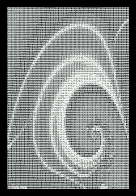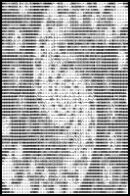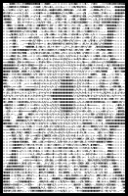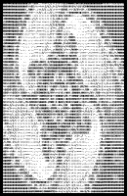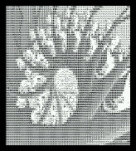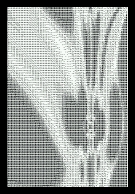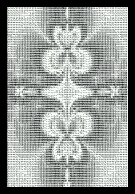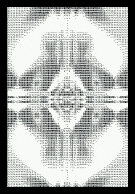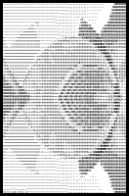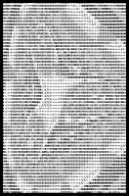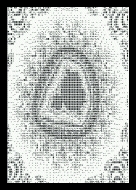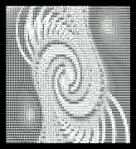| juan's ascii fractals | ||||||||||||
| ||||||||||||
| . . . |
Spot Light Corner: Juan's ASCII Fractals
Once upon a time in the kingdom of DOS there were no GUI (Graphical User Interfaces), and there was not a single mouse in the entire computerland. When you turned on your computer all you got was a flickering ">" sign of the cursor, and then you have to do your daily exercise and begin pondering on the keyboard (and believe you me, then days a keyboard was a solid piece of iron and not these plastic 10 bucks junk:) So in that old days, when a programmer wanted to have some graphical motto to enlighten his black page, he has to build his pictures with character "blocks", just like this "FAME" example here, build with a single "@" character: 
So just imagine my surprise as I first encountered Juan's magnificent fractals built of ASCII characters! Of course it was a natural spot light. So I asked my friend Juan to tell us a little about this phase of his fractal art, and here is what he told me: "The first fractal-text association sample I saw was a fractal image created by Stephen C. Ferguson to which he added a mathematical expression (a fractal formula). Shortly thereafter, Terry Wright went further, and added a complete poem to one of his own images and started his already famous fractal poems. After seeing those two examples I wondered how difficult it would be to convert a fractal image to plain ASCII art (after all, language has fractal characteristics too). As can be imagined, preserving a fractal image using character strings proved to be very difficult by hand. After some frustrating attempts to "redraw" one of my own fractal images into ASCII art, I did a search through various software collections and found a small freeware application, called ASCIIPic, which could do the job in a "flash". This application selects a predefined character according to the shades of an image, and traces its pattern to an ASCII file output automatically. Once the task is done, it's just a matter of "find and replace" to change certain characters to render it closer to real ASCII art or to select another characters to please the eye. Then, I started to add HTML coding to assign colors to the images and to put them online. That, in a sense, makes the file simpler because a single character can be used to trace the whole picture, but turns it from a normal text archive (6 Kb) into a bitmap equivalent (115 Kb). I also have added some graphic elements to make the picture more complex, and even have toyed with the idea of adapting sentences and short poems to the fractal patterns. In order to produce an acceptable-size ASCII file with ASCIIPic, the image must not be larger than 100x100 pixels. Otherwise, the resulting ASCII image will span several 640x480 resolution screens. And don't worry about the image's appearance: the ASCII image will never reach the original image's resolution or complexity; plus, if you want to see the ASCII nature of the picture, the characters, by default, should not be made smaller than 6 points or so. What's more important is to care for the image's aspect ratio. ASCIIPic, as well as other similar programs I have tried, can hardly keep the image's original proportions. So in order to maintain them, you'll have to alter the image's proportions in a graphic editor before applying ASCIIPic. Of course, it's a matter of trail-and-error until you're satisfied. Finally, if you want to create an ASCII gallery with thumbnails, it's pretty obvious that a thumbnail-size ASCII counterpart won't even get close to an incoherent group of Xs and Ms. So what I do is a screen capture of a full screen browser view of the corresponding ASCII image, and import it into a graphic editor (I use XNView, which is pretty good, or PaintShop Pro) to shrink it to the desired size. That's pretty much the "technique". *** and I will end with a tip: the best way to view a big ASCII graphic is to PRINT it. So print the html files behind the B&W fractal, and enjoy it on your studio wall. The curator May 2000 |
| Juan's ASCII Fractals in Color | |||||||||||||||
| |||||||||||||||
Editor: Dr. Joseph Trotsky
Copyright 2000 "FAME" All rights reserved
Fractal Art Museum Enterprise Fractalis
